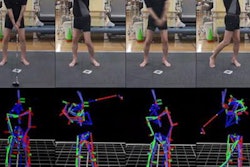Researchers at the Mayo Clinic in Rochester, MN, have taken a first step in using AI to automatically classify and organize shoulder x-rays on a large scale, according to a recent study.
The group, led by Linjun Yang, PhD, of Mayo’s Orthopedic Surgery AI Laboratory, developed an efficient, accurate, and reliable AI algorithm to automatically identify key imaging features on patient shoulder x-rays.
“This algorithm represents the first step to automatically classify and organize shoulder radiographs on a large scale in very little time, which will profoundly enrich shoulder arthroplasty registries,” the group wrote, in an article published October 23 in Journal of Shoulder and Elbow Surgery.
Joint arthroplasty registries are organized and coordinated data storage systems that provide an efficient means for investigating the course of a disease and the performance of different implants and arthroplasty techniques, the researchers explained.
To date, most registries consist primarily of clinical data, and either completely lack or contain very limited medical imaging information. This can be attributed to the tedious, manual, and time-consuming task of reviewing images to extract a set of pre-defined parameters, the researchers noted.
In this study, the group hypothesized that a deep learning AI model could efficiently and accurately classify shoulder x-rays according to important features
The researchers included 2,303 x-rays from 1,724 shoulder arthroplasty patients, with two observers manually labeling all x-rays according to three features:
- The laterality of the shoulder (left or right)
- The x-ray view (anterior-posterior, axillary, or scapular Y-view)
- Whether the image had no implant (preoperative), an anatomic total shoulder arthroplasty (aTSA), or a reverse shoulder arthroplasty (RSA)
All of the labeled x-rays were randomly split into development and testing sets at the patient level and based on stratification, with the trained algorithm then evaluated on the testing set using quantitative metrics and visual evaluation techniques.
According to the findings, the algorithm perfectly classified the laterality (F1 scores of 100% on the testing set). When classifying the imaging projection, the algorithm achieved F1 scores of 99.2% on anterior-posterior views, 100% on axillary views, and 100% on lateral views.
In addition, when classifying the implant type, the model achieved F1 scores of 100% on preoperative images, 95.2% on aTSA, and 100% on RSA x-rays.
Importantly, it took the algorithm 20.3 seconds to analyze 502 images, the authors added.
“The ability to complete this task automatically, quickly, and with outstanding precision translates into incredible potential time and cost-savings for research endeavors,” the group wrote.
The researchers noted that in the future, they plan to develop additional AI algorithms to identify more imaging features to enrich the registries and that external validation of the algorithms to demonstrate generalizability and use across different institutions will be needed.
“The algorithms developed in this study represent a first step in the organized addition of medical images to tabular shoulder arthroplasty registries that can further be mined to answer questions requiring both clinical and imaging data,” the group concluded.
The full study can be found here.



















